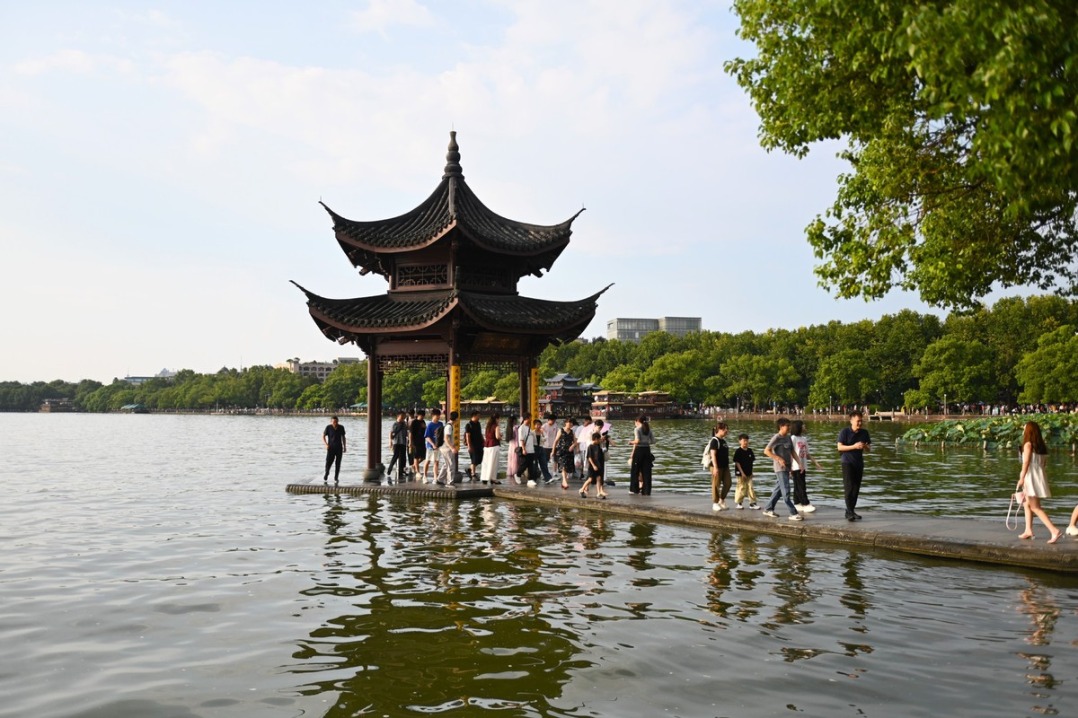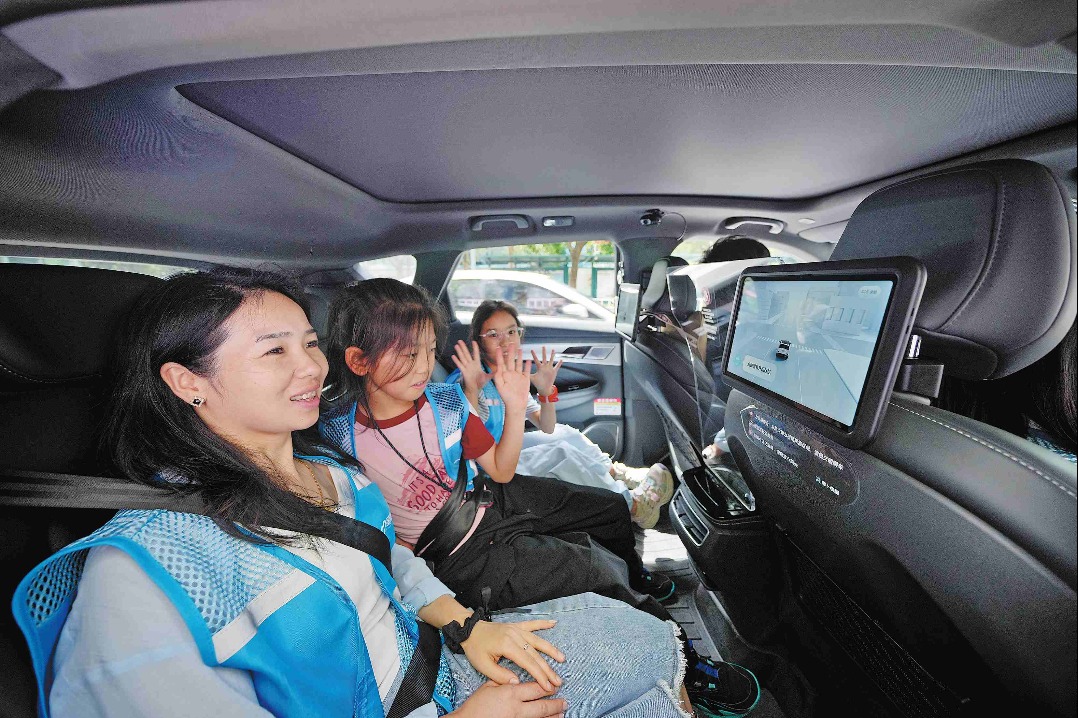Words of beauty

As Chinese aesthetic ideals have evolved, so too has the burgeoning plastic surgery industry
Fang Long has just come back from South Korea after feeling anxious about her looks. At 38, she looks to be in her early 30s at most, thanks in part to plastic surgery she has had done there.
She has had her nose done twice, her breasts enlarged to a D-cup, her legs shaped by liposuction, and that doesn't include regular anti-wrinkle injections for her face. It does not show that she is the mother of a 12-year-old, or that her boyfriend is 11 years younger than she is.
However, it seems the more she changes herself, the unhappier she becomes.
During her trip to South Korea, she spent 60,000 yuan ($9,650; 9,100 euros) at the famous plastic surgery street in Seoul, yet she came back with her confidence shattered. "Many women in Seoul looked so perfect," she says. "You can tell they are 'not real', but their faces are like works of art. Now I cannot even look at myself in the mirror."
In his office in the Department of Plastic and Cosmetic Surgery, Peking University Third Hospital, Xue Hongyu deals with patients like Fang Long almost every day. He has been practicing for over 15 years and is one of the most sought-after surgeons in China.
"In so many cases I have to deal with patients who are never satisfied with themselves. You can say the purpose of their life is to have more and more plastic surgery on themselves," Xue says.
While only a fraction of Chinese women are addicted to plastic surgery, the dramatic hike in the trade is palpable. China's history of plastic surgery solely for beautifying oneself (not treating injuries and deformities) has taken flight only in the past decade or so.
Liu Yuanbo, a surgeon at the Plastic Surgery Hospital Institute, Chinese Academy of Medical Sciences, who has been practicing plastic surgery since 1991 and has witnessed the transformation, recalls that, as early as the mid 1990s, his clients were still mostly actresses and other public figures. The popularization of plastic surgery is a byproduct of China's rapid economic development. The real turn came after 2000, when it was mass marketed.
Meanwhile, standards of beauty have also gone through dramatic changes. Chinese painters set the criteria for beauty in ancient times, and defined it as "三庭五眼", which roughly translates to "a perfectly proportioned face no more or less than three times the forehead in length, and five times the eye in width". An ancient beauty should have smooth, white skin.Her face should be round at the forehead and small-chinned. She should have bright eyes that are slim and tilt upward, as well as black, slightly arched eyebrows and a smile with dimples.
Pop culture now wields a massive influence over plastic surgery. With South Korean TV shows and Japanese cartoons depending on female viewers, women flock to doctors holding photos of South Korean divas. Others seek large, innocent eyes like Japanese anime figures.
In the past few years, traditional standards for beauty have more or less been discarded. Ten years ago, it was still common for women to get dimples, a valued feature of traditional beauty, but now almost no one opts for that.
Breasts are also a prime area of augmentation, and they are getting bigger; 10 years ago most implants were around 200 cubic centimeters, now most are around 300 cc.
The market for plastic surgery in China is mainly composed of two different types of facilities: plastic surgery departments in sanjia hospitals (i.e. first-rate, large public hospitals) and private plastic surgery clinics and salons. The plastic surgery departments in public hospitals of lower quality sometimes contract operations out, so they can sometimes fall into the "private" classification.
When one enters a private plastic surgery franchise, like Yestar or Mylike, the spacious, glittering reception hall has the feel of a five-star hotel. In most cases, they claim to have products imported from the United States and Europe, and operations are either performed by South Korean doctors or in authentic South Korean style.
Sanjia hospitals are often located in old buildings, and appear no different than their other hospital departments - narrow corridors, peeling walls, impatient nurses, and doctors who speak to you matter-of-factly.
However, in terms of reliability, it is generally believed that sanjia hospitals are more trustworthy because that is where China's elite doctors are concentrated. They are equipped with laboratories doing pioneering research, and the doctors regularly go to international academic conventions and are generally considered to have better medical ethics.
Liu Yugang, public relations director for the plastic surgery department of Peking University Third Hospital, has been in the business for about two decades. "Beauty is a highly subjective matter," says Liu. "You have to know that everything comes at some risk, and with a doctor, no matter how experienced and prestigious he or she is, there is no way to guarantee absolute success. However, it is human nature to be lured by absolute promises, tags, fads and packaging. As such, this profession can be easily misleading."
Technological advancements are making plastic surgery easier. Some doctors still use the patient's own fat as filler in most cases. The method is very old, causes more pain and larger wounds, involves a longer recovery time, and is just as expensive as injections of hyaluronic acid, which could do exactly the same thing and are instant. The injections have so far been proven relatively safe but have yet to stand the test of time. "It's part of our fast food culture," says Xue, on the popularity of hyaluronic acid. "People don't want to wait for 15 days or a week; they want themselves to be instantly attractive on a lunch break."
While those injections have shown to be pretty harmless, plastic surgery took a hit between 1999 and 2006 due to a dangerous material believed to be relatively risk-free - polyamide, a yellow, jelly-like material that was permitted to be used as a filler in humans. Only sanjia hospitals had permission to inject it, but few doctors, acting out of prudence, chose to use it.
Yue Lin had an injection of polyamide in her nose in 2002 at a private clinic. Four years later she realized that her nose was melting - becoming wider as her face began to swell. That same year, polyamide was forbidden from medical use because it was found to be toxic to the nervous system, carcinogenic, and a catalyst for deformities and infections.
When she went to a public hospital to get rid of it, the doctor told her that to pick it out would be like "picking sand from tofu" and that she was not the most unfortunate by far. Over 300,000 victims injected with large quantities of polyamide as breast implants faced possible breast removal and chest infections, and may struggle with permanent pain.
According to the China Consumers' Association, plastic surgery prompts around 20,000 complaints each year. However, there is no sign that the number of people getting plastic surgery will slow. According to ASKCI, a Chinese consulting firm, the growth rate is well over 20 percent, and it is predicted that, in 2015, over 7 million people will get plastic surgery in China, 82 percent of them women.
The boom is caused - aside from Chinese people having more expendable cash - at least in part by social pressure on women in China, where a pretty face gets you a better salary.
"There are people who come to me and invest all their hopes in life in plastic surgery, expecting it to bring a brand new lifestyle, and save them from all their troubles," Xue says. "In such cases I often turn them down. I know it's impossible."
Courtesy of The World of Chinese, www.theworldofchinese.com
The World of Chinese

(China Daily Africa Weekly 04/17/2015 page27)






























